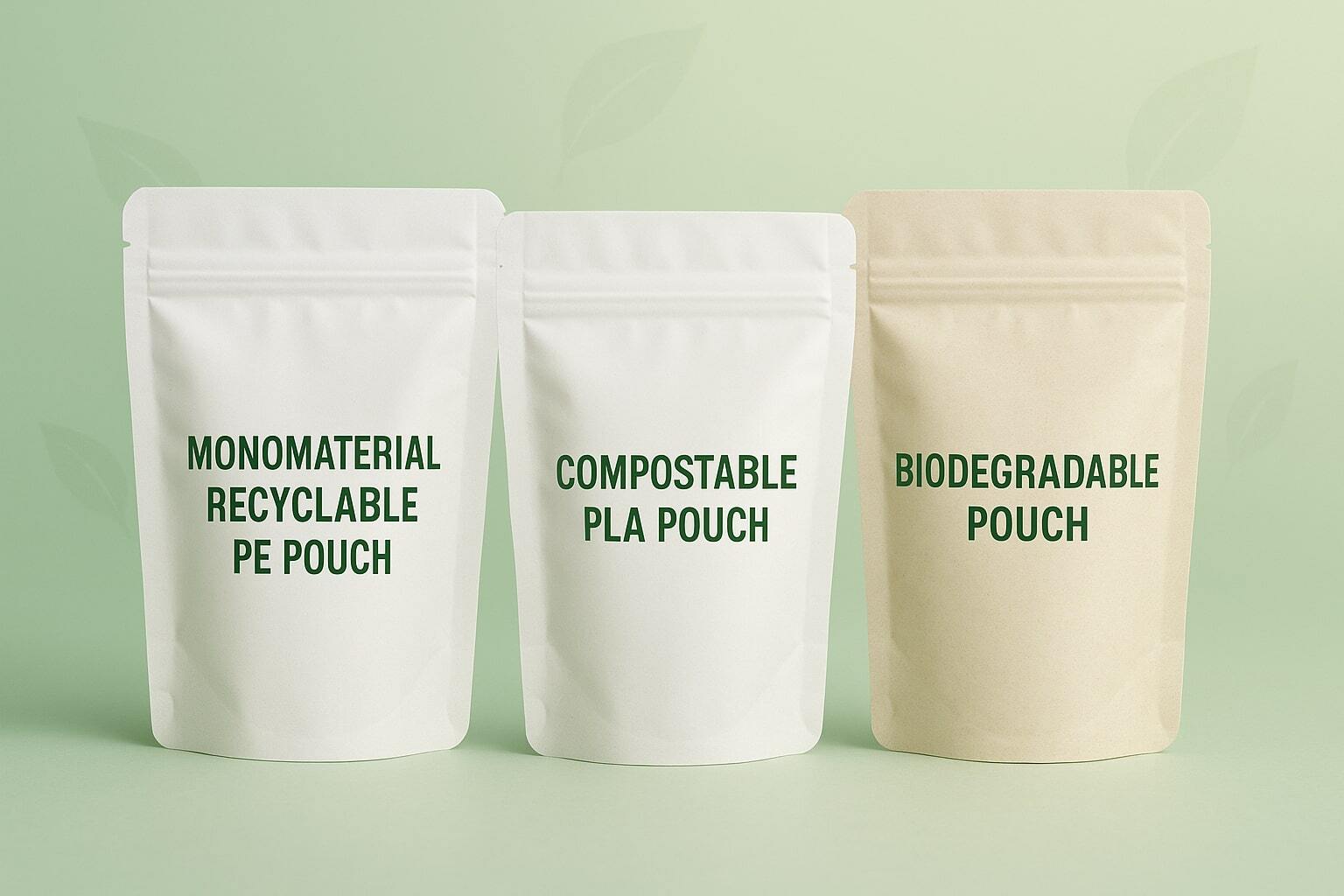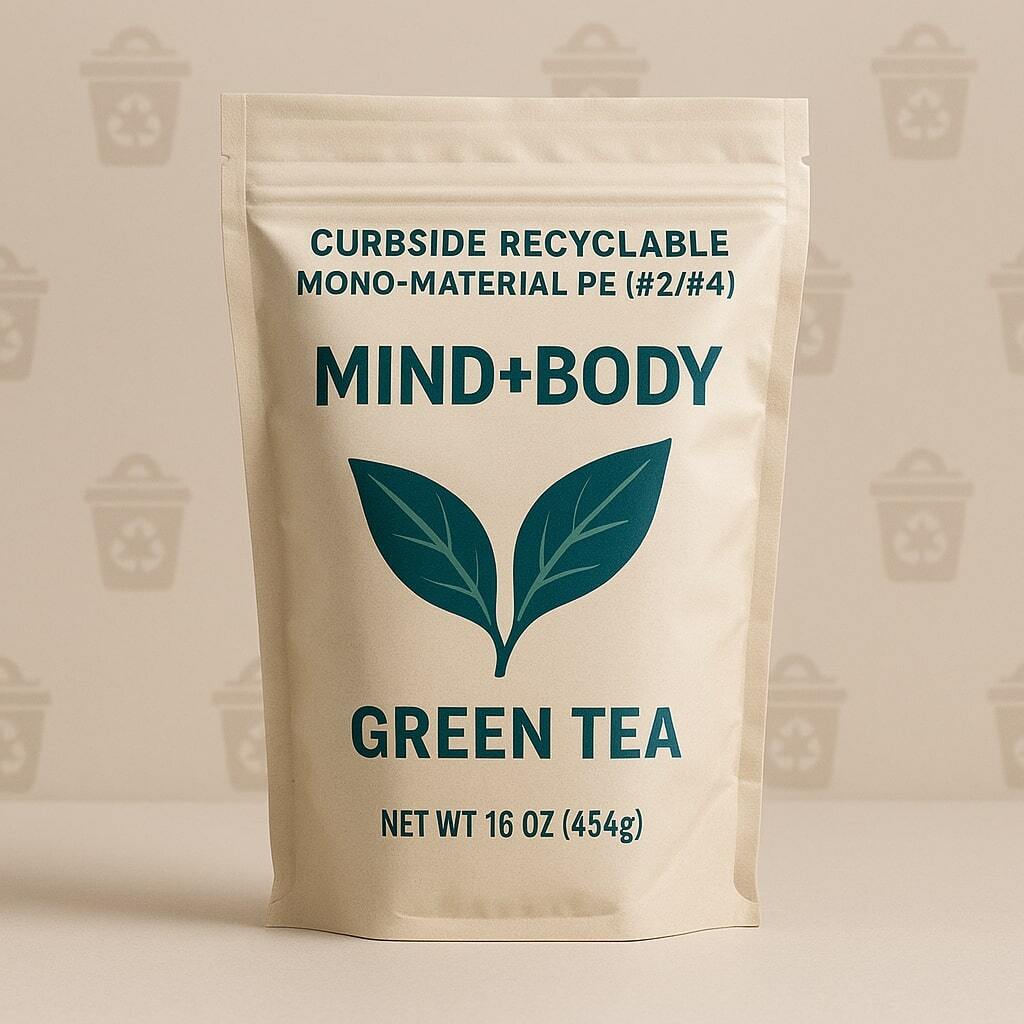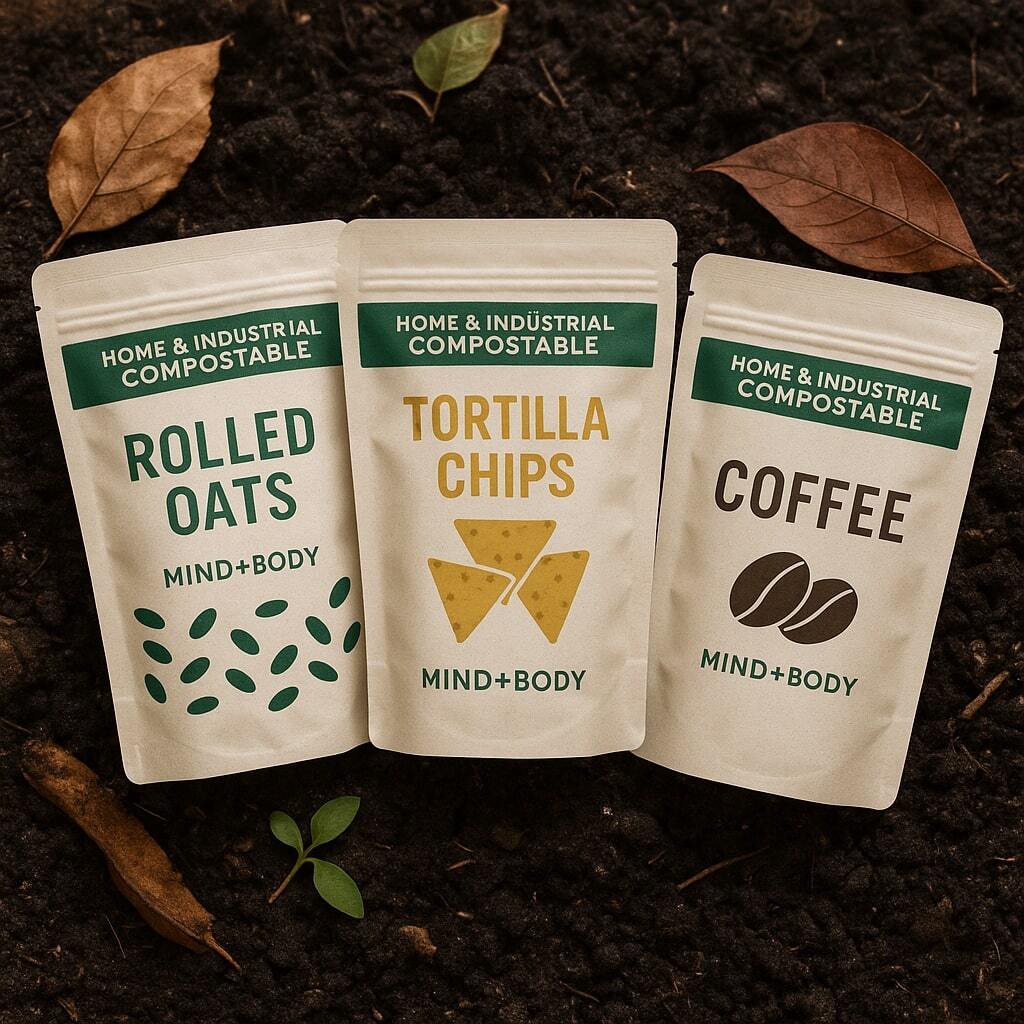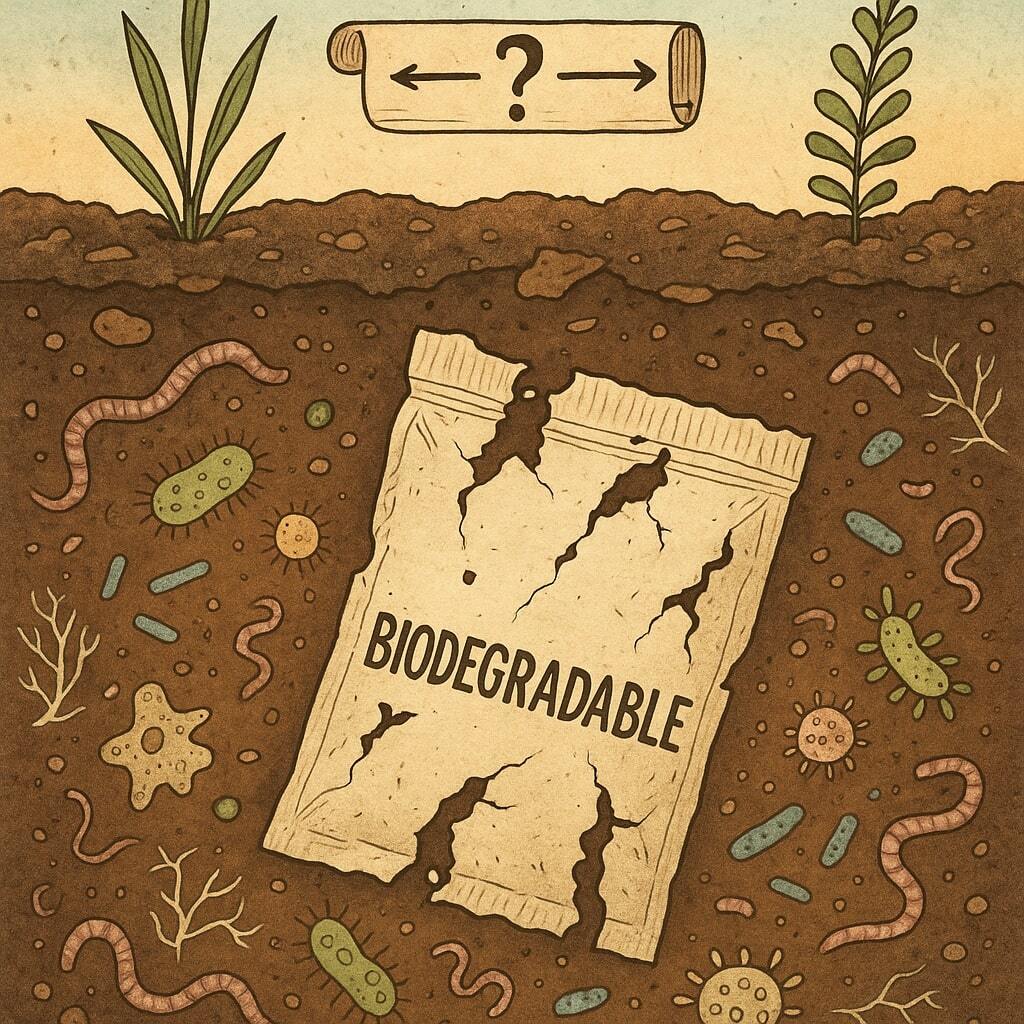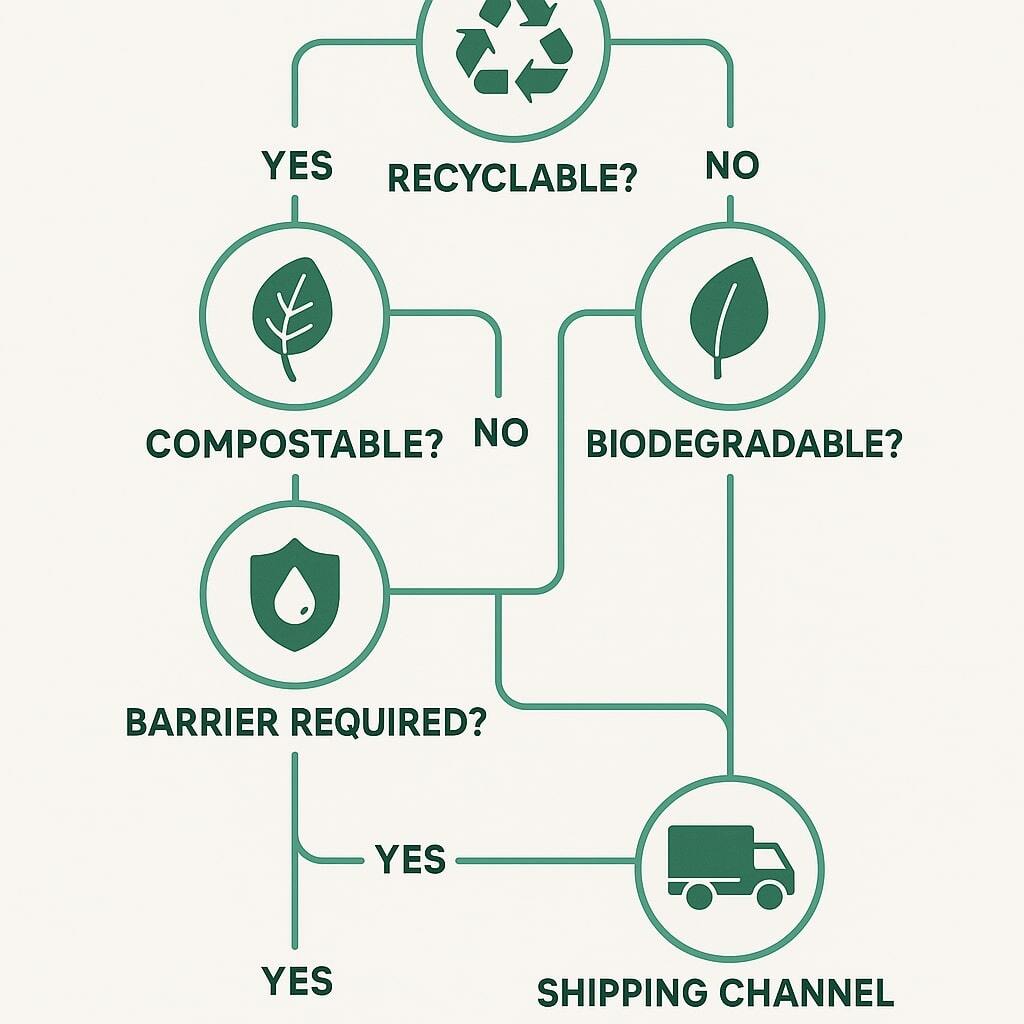Recyclable Pouches
Definition: Can be processed and reused by industrial recycling systems—typically through curbside or specialty recycling programs.
Most Common Type:
- Mono-material polyethylene (PE) pouches, labeled #2 or #4 plastic
- Clear or printed, often with resealable zippers
What to Know:
- True curbside recyclable pouches are rare but growing
- Laminate pouches with aluminum or multiple plastic layers are not recyclable
- Recyclability depends heavily on local infrastructure
Best For: Dry goods, snacks, supplements, refills
